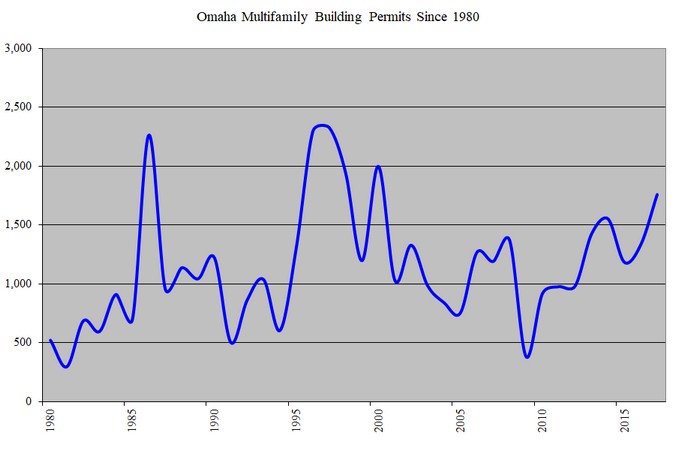Tax Reform: No free lunch for apartment owners
Rural Nebraskans suffered from heavy flooding this past March, so the IRS allowed residents of many counties to extend their filing deadline to July 31st. As we wind down this uniquely painful tax season, it’s time to reflect on what has been a most unpleasant set of surprises unleashed upon many real estate investors by the The Tax Cuts and Jobs Act of 2017.
The tax reform law was a boon for corporations. It reduced the average tax rate from 29% to 21%. Pass-through entities such as limited liability companies (LLCs) and S-Corporations also stood to benefit from certain deductions, the most common of which included a 20% deduction on net income. Although the law had been passed in 2017, much of the guidance was written throughout 2018 and even into early January of 2019.
When the dust settled earlier this year, it became apparent that the new law contained limitations on deductions that sent accountants and property investors scrambling for cover.
Real estate owners have been able to use depreciation charges to shelter taxable income. Depreciation is the non-cash expense that owners are allowed to deduct from operating income which represents the deterioration of a physical asset as it ages. In the case of apartments, the standard method is to divide the asset cost (excluding land), by 27.5 years and deduct that amount from reported net income on an annual basis. On a $1,000,000 building, the annual deduction is around $36,400 per year.
Real estate owners are also allowed to deduct mortgage interest from net income (principal can not be deducted). Therefore, many real estate partnerships, especially in the early years of operation, reported negative earnings to the IRS once depreciation and interest were subtracted from operating income. Individual investors with passive income from other investments were able to shelter this income with losses from real estate.
The 2017 law essentially invalidated the ability to report a net loss to the IRS for most real estate partnerships.
As of tax year 2018, if an apartment building runs a net loss after depreciation charges and interest deductions, it is thus deemed to be a “tax shelter”. Consider the words tax shelter to be the accountant’s equivalent of a football referee seeing a questionable call on the field and requesting a video replay review. Once the net loss was evident under prior accounting principles, accountants presented their clients with one of two choices: Either switch to an alternative depreciation schedule (ADS) of 40 years instead of 27.5 years, or limit interest deductions to 30% of net operating income. The new rules mean that ability to generate a reported loss to the IRS has all but vanished. Sheltering passive income with passive losses from real estate is now virtually impossible.
In fairness to Congress, their intention was good: reduce the desire for investors to maximize leverage in order to maximize the deductibility of interest. By reducing the tax benefits of heavy borrowing, you reduce risk in the system.
Here’s rough sketch of what taxable income looked like before and after the tax reform law:

Under the old law, a taxpayer actually reported a loss to the government. Today, the investor makes a choice. In Option 1 where the depreciation charge is reduced under a 40 year schedule, the tax would be about $2,000. In the second case where interest expenses in excess of 30% of net income are added back, the tax is around $3,500. The Tax Cuts and Jobs Act of 2017 is actually a tax increase for many leveraged partnerships.
Which option would you choose? The longer depreciation term looks more appealing, however there are two caveats: Once you elect to take the ADS, you can never go back. Second, the interest deductibility limitation is painful in the short run, but those unused interest deductions are carried forward and can offset future income. So, an investor with a longer perspective may opt for the interest limitation. A last note of caution: the interest deductibility limitation gets even more strict in 2021. During that tax year the deduction is limited to 30% of net income AFTER depreciation.
There are several very important loopholes in this law. The most egregious example is that a pass-through partnership with limited partners that do not exceed a 35% ownership threshold are exempt from the deductibility limitations. This clause unfairly penalizes pass-through companies with a high number of partners.
Now, before we conclude, I have to provide you with this disclaimer: I am not a tax expert. My examples are very generic and are purely for illustrative purposes. You absolutely should not rely on this information and you must consult with a tax professional for guidance.
So, does real estate still offer tax benefits?
Yes. The ability to deduct depreciation and interest may not be as generous as in years past, but they are still deductible. Depreciation is particularly beneficial because it is a non-cash charge. Tax advantages remain, but the noose has been tightened.





